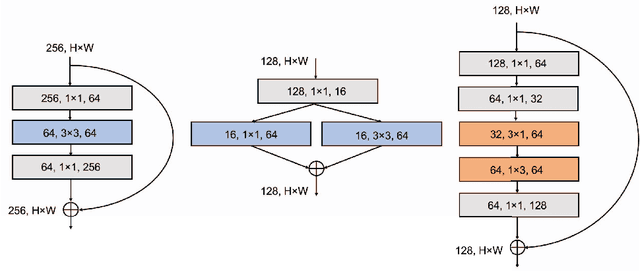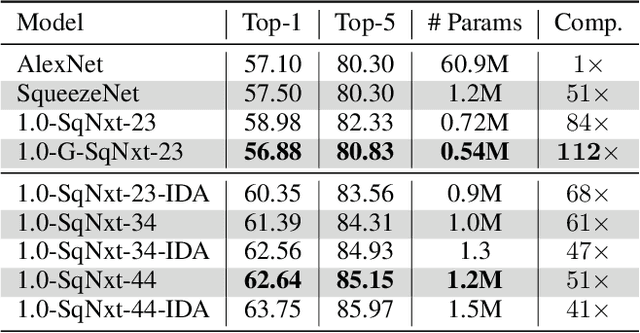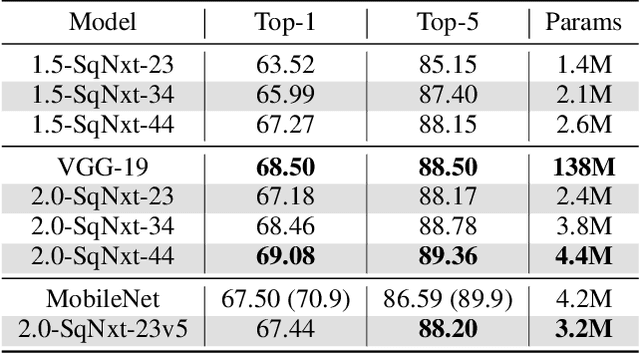Zizheng Tai
SqueezeNext: Hardware-Aware Neural Network Design
Aug 27, 2018



Abstract:One of the main barriers for deploying neural networks on embedded systems has been large memory and power consumption of existing neural networks. In this work, we introduce SqueezeNext, a new family of neural network architectures whose design was guided by considering previous architectures such as SqueezeNet, as well as by simulation results on a neural network accelerator. This new network is able to match AlexNet's accuracy on the ImageNet benchmark with $112\times$ fewer parameters, and one of its deeper variants is able to achieve VGG-19 accuracy with only 4.4 Million parameters, ($31\times$ smaller than VGG-19). SqueezeNext also achieves better top-5 classification accuracy with $1.3\times$ fewer parameters as compared to MobileNet, but avoids using depthwise-separable convolutions that are inefficient on some mobile processor platforms. This wide range of accuracy gives the user the ability to make speed-accuracy tradeoffs, depending on the available resources on the target hardware. Using hardware simulation results for power and inference speed on an embedded system has guided us to design variations of the baseline model that are $2.59\times$/$8.26\times$ faster and $2.25\times$/$7.5\times$ more energy efficient as compared to SqueezeNet/AlexNet without any accuracy degradation.
Hemingway: Modeling Distributed Optimization Algorithms
Feb 20, 2017



Abstract:Distributed optimization algorithms are widely used in many industrial machine learning applications. However choosing the appropriate algorithm and cluster size is often difficult for users as the performance and convergence rate of optimization algorithms vary with the size of the cluster. In this paper we make the case for an ML-optimizer that can select the appropriate algorithm and cluster size to use for a given problem. To do this we propose building two models: one that captures the system level characteristics of how computation, communication change as we increase cluster sizes and another that captures how convergence rates change with cluster sizes. We present preliminary results from our prototype implementation called Hemingway and discuss some of the challenges involved in developing such a system.
 Add to Chrome
Add to Chrome Add to Firefox
Add to Firefox Add to Edge
Add to Edge